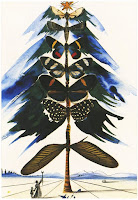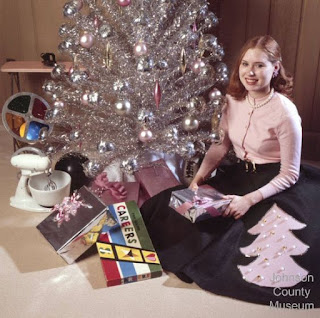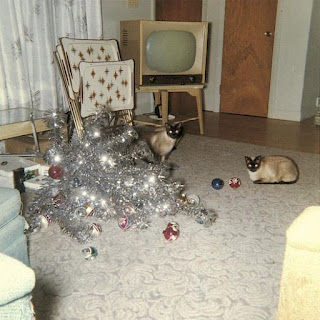Now that we are done digesting the turkey and are almost sick of turkey soup, it is time to get serious about Christmas shopping. This year shopping, like everything else in 2020, is colored by Covid. Instead of flocking to big box stores and the mall, many people are shopping in the safety and comfort of their homes. But endlessly searching the net can be deadly dull for some people, and rife with a-lot-of-the-same for everyone. So, if you are a tree lover and/or are shopping for one, I have done some of the scrolling for you and curated some cool choices. But, don’t think only of tree aficionados while looking through these choices, anyone who loves Nature in general will enjoy one of these.
When you get right down to it, the best present for a tree lover is probably an actual tree and these days there are a variety of ways you can gift one:
• Trees that someone else plants: For someone who doesn’t have the place or desire to plant a tree, you can donate to a non-profit and they’ll plant one for you. The Nature Conservancy is not fooling around. This well-respected organization plans to plant a billion trees, much of it funded by small donations. Another option is the nonprofit Donate A Tree To The World. They are fighting climate change and helping disadvantaged communities in Mexico and Colombia through reforestation. They will send you a picture of your tree and follow its growth for you. One of their projects is working to build the numbers of pine nut trees, whose struggle I wrote about in my last blog. Pine nuts are not just important to people around the world, according to this article by the World Wildlife Fund, pine nuts are essential to tiger survival in the Russian Far East.
•
Trees to grow from saplings or seeds: It takes real optimism in your recipient’s commitment to give a tree seed as a present. But, should you choose to do so,
Seeds of Life has the stuff for you. They sell seed packets, seedlings, and gift trees. Many other outlets, like
FastGrowingTrees.com and
Bower & Branch, sell a great variety of small trees ready to be gifted.
Still unsure about giving a living tree?
This short article has some ideas about why you should, trees for different occasions, and additional nonprofits that plant trees.
If you think having a tree planted from afar seems less-than-personal for a Christmas gift, perhaps you’d prefer to buy a present that you can touch, and still plant a tree. There are more and more businesses that position themselves as eco-friendly and many are getting their hands in the dirt to prove it. Companies like Save Lands offer cute gear and entice you to buy with their tree-planting mission. For Save Lands, it’s twelve trees planted for every item sold. Here is a list of nine other companies that do something similar. This trend of driving e-commerce with feel-good consumerism is not universally accepted. Here is an article from Canada that explains some of the reasons why.
Some retail sites have outstanding selections for the tree lover on your list. Here are some standouts:
•
Soul Flower – Their things are very I-wish-it-was-the-60’s, Boho-Hipster Chic. But in a good way.
• Popular Science - I know – Popular Science? This is not really a retail site, but, Eleanor Cummings has put together a thoughtful collection for tree huggers.
•
Uncommon Goods – This site has an uncommonly good selection of tree-themed gifts.
 |
| Misty Mountain Clock |
•
Wildlife Wonders - Their goods can be pricey, but they're clever and beautiful. Even if you don’t have deep pockets you should take a scroll through this site just to admire what they have. And there
are some deals to be found.
Large retail sites like Etsy have seemingly endless items under their tree-themed sections. If you’ve ever been on Etsy, you know the stuff ranges from the sublime to the ridiculous. For not-expensive gifts, I particularly like the pinecone key chains, the misty mountain clock, and the handmade fir tree soap. The tree wall art is also very nice if you have the right person with the right space to give it to. Another potential Etsy gold mine of tree presents is the multitude of Tree of Life designs – jewelry, art pieces, textiles, you name it - I think I even saw a knitted cap in there.
As I’ve been looking at tree-centric gifts, I’ve noticed all the family trees that keep popping up. They are clearly wildly popular these days, and with good reason. As more and more people do their DNA, interest in ancestors has grown and family trees are a great way to showcase all that. But, the variety of styles and cost-points is nearly overwhelming. You can get a kit from Family Locket that can be done with the kids and makes a felt family tree. Or you can get a pretty black metal tree that you add engraved magnetic leaves to from Personalization Mall. Or you can get a wall hanging that shows your family fanning out in a beautiful tree from this Etsy vendor. Or you can go to Branches and get a fully custom family tree made, including framing. Or (my personal favorite) get your family tree put on an actual piece of wood from Foxbairn. If this is something you think you want to do, you should act fast as custom pieces take extra time to create. 
Finally, I’d like to recommend an ARBICO Organics gift certificate. While it’s true that we don’t sell trees or tree-themed merch, we do cater to people who care for trees. So, if your tree lover walks the walk by growing trees, we have something they can use. And, of course, we have something for anybody who loves to grow anything.
Christmas is meant to be a happy time of year, but this year is bound to be challenging for many. If at all possible, try to make the one thing you can control –your gift-giving – as simple and enjoyable as possible.
Take Care.
Submitted by Pam






































